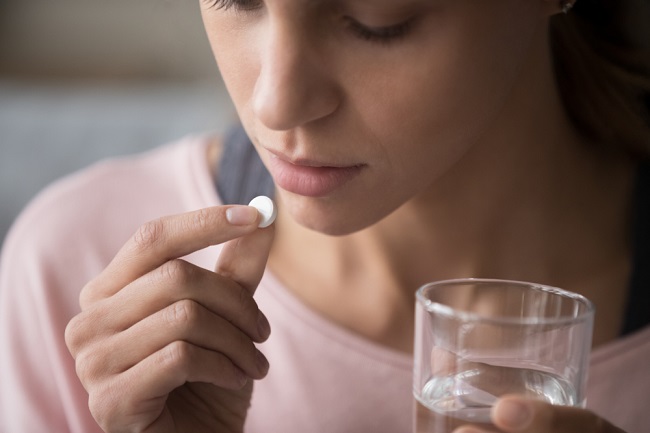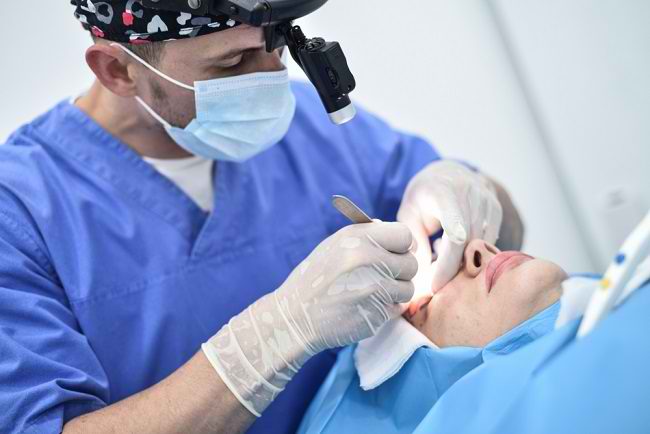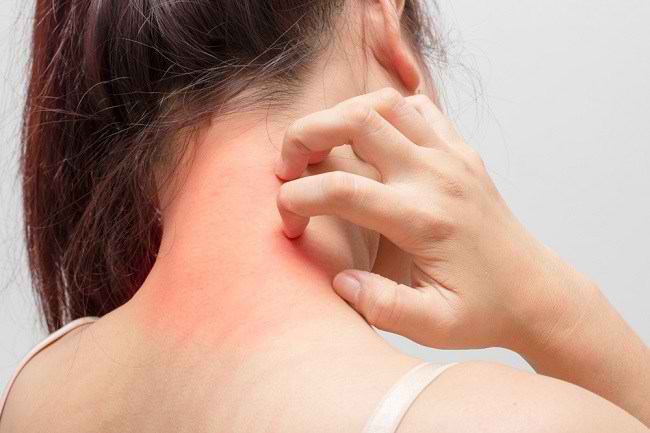Fluticasone is a drug to treat inflammation that can be caused by allergic rhinitis, nasal polyps, allergic contact dermatitis, or atopic dermatitis. This drug can also be used to help relieve symptoms of asthma.
Fluticasone is a type of corticosteroid anti-inflammatory drug that can relieve complaints, such as sneezing, runny nose, or nasal congestion, due to allergic rhinitis. This drug is available in the form of an inhaler, nasal spray, or cream that is applied to the skin.

Fluticasone trademark: Medicort, Cutivate, Flutias, Respitide, Seretide Diskus, Salmeflo, Avamys, Flixonase Aqueous Nasal Spray
What's thatFluticasone
| group | Corticosteroids |
| Category | Prescription and over-the-counter drugs |
| Benefit | Relieves symptoms of inflammation, allergies, and asthma |
| Consumed by | Adults and children |
| Fluticasone for pregnant and lactating women | Category C: Animal studies have shown adverse effects on the fetus, but there are no controlled studies in pregnant women. Drugs should only be used if the expected benefit outweighs the risk to the fetus. It is not known whether fluticasone is absorbed into breast milk or not. If you are breastfeeding, do not use this medicine without consulting your doctor first. |
| Drug form | Cream, nasal spray, inhaler powder |
Precautions Before Using Fluticasone
There are several important things to consider before using fluticasone, including:
- Do not use fluticasone if you are allergic to this drug.
- Avoid contact with people with infectious diseases, such as measles.
- Tell your doctor if you are pregnant, breastfeeding, or planning a pregnancy.
- Check your child's growth and development regularly during treatment with fluticasone. This is because long-term use of fluticasone can slow down the growth process.
- Tell your doctor if you have or are currently suffering from liver disease, glaucoma, cataracts, diabetes, adrenal gland disorders, or infectious diseases, such as herpes of the eye, skin infections, and tuberculosis.
- Tell your doctor if you have recently had a nose injury or had rhinoplasty.
- Tell your doctor if you are taking any medications, supplements, or herbal products.
- Tell your doctor if you plan to have any dental treatment or surgery while you are on fluticasone.
- Check with your doctor if your symptoms do not improve after using fluticasone for 1-2 weeks.
- Immediately see a doctor if you have an allergic reaction to the drug or experience an overdose while using fluticasone.
Dosage and Instructions for Use of Fluticasone
The dose of fluticasone depends on the form of the drug and the age and condition of the patient. Here are general doses of fluticasone for a number of conditions:
Fluticasone cream
Conditions: dermatitis and eczema
- Adults: Apply fluticasone 0.05% cream to problem areas 1-2 times daily for 4 weeks.
Fluticasone powder inhalation (inhaler)
Condition: asthma prevention
- Adult: initial dose 100 mcg, 2 times daily. For moderate and severe asthma, the dose is 250–500 mcg, 2 times a day. The dose can be increased to 100 mcg, 2 times a day.
- Children 4–16 years of age: initial dose of 50–100 mcg, 2 times daily. The maximum dose is 200 mcg, 2 times a day.
Fluticasone nasal spray
Condition: allergic rhinitis
- Adults and children >12 years: 2 sprays (27.5 mcg fluticasone furoate) or 1–2 sprays (50 mcg fluticasone propionate) into each nasal cavity, once daily.
- Children 2–11 years: 1 spray (27.5 mcg fluticasone furoate/50 mcg fluticasone propionate) into each nasal cavity, once daily.
How to Use Fluticasone Correctly
Use fluticasone according to the directions on the medicine package or according to the directions and instructions for use that have been explained by your doctor.
The dose of fluticasone depends on the patient's condition and response. Do not increase the dose of the drug without consulting your doctor first. The dose can be reduced if the patient's symptoms improve.
If you are using fluticasone in cream form, apply it only to the affected skin area. Do not cover the skin that has been smeared, except on the advice of a doctor.
Avoid using fluticasone cream on the face, genitals, rectum and skin folds. If it gets in your eyes or mouth, rinse the area immediately with water.
If you are using fluticasone nasal spray, shake it well before use. Then lift your head and insert the tip of the spray into one of your noses. Close the other nostril as you spray the medicine, then breathe in slowly. Repeat the same steps for the other hole.
If you forget to take fluticasone, do it as soon as you remember if the break with the next schedule is not too close. When it is close, ignore and do not double the dose.
Discard fluticasone nasal spray when it reaches 120 sprays, even if there is still liquid medicine in it.
Use fluticasone regularly to get the maximum benefit of this drug. To help remember, use it at the same time each day.
Fluticasone Interactions with Other Drugs
Avoid taking fluticasone along with CYP3A4 inhibitor drugs, such as ketoconazole, itraconazole, and ritonavir, because it can increase the risk of side effects from fluticasone.
Fluticasone Side Effects and Dangers
There are several side effects that can occur after using fluticasone, namely:
- Dry, irritated, or red skin
- Nausea and vomiting
- Diarrhea
- Headache
- Fever
- Shivering
- Nosebleed
- Dry or irritated nose
- Nose hurts
- White spots in the nasal cavity or mouth
- Sore throat
Immediately see a doctor if you experience the above complaints or if you have an allergic reaction to the drug which is characterized by the appearance of an itchy rash on the skin, swelling of the lips and eyelids, or difficulty breathing.









